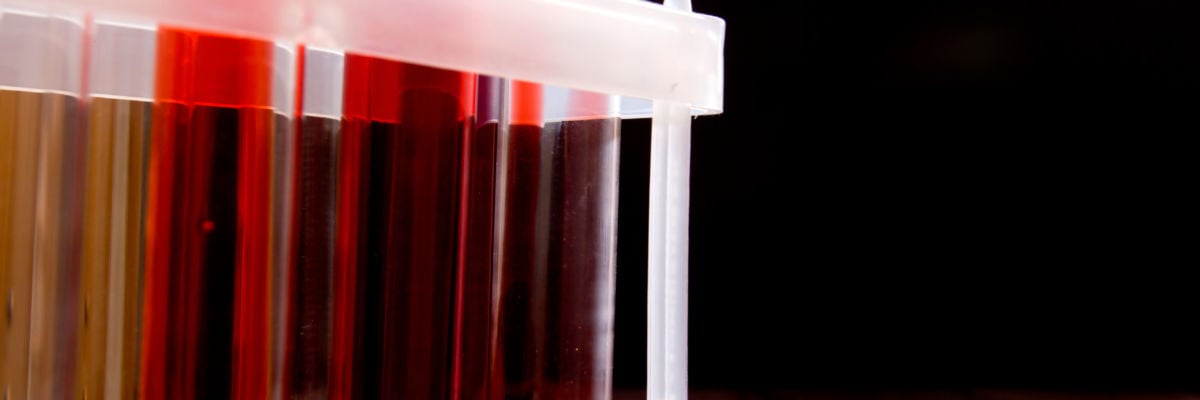
There are many ways to go about discussing arguments for God. I have heard many of them, from Protestants and Catholics alike. But one argument—quite a strong one—that doesn’t get as much attention as it should centers on the mathematics behind eucharistic miracles.
Eucharistic miracles are miracles in which the host is actually seen bleeding. This can happen for a variety of reasons. Many times, it happens in times of weakened faith in transubstantiation.
According to Ronald Rychlak, professor of law and associate dean at the University of Mississippi, the Church currently recognizes around 120 eucharistic miracles. These include hosts that have been preserved for over 1,200 years.
One such story comes to us from 1992 in Buenos Aires, Argentina, which was in Pope Francis’s former diocese as bishop. Carlos Domínguez, a lay minister, noticed host fragments in front of the tabernacle. He mentioned this to the priest, who encouraged him to begin a dissolving process, as he thought they were no longer edible. A week later, the priest checked the container and was amazed at what he saw. There were blood steaks on the walls of the container. This, followed by a bloodstained paten containing a consecrated host in the same parish, led researchers to examine the situation. Dr. Adhelma Myrian Segovia de Sasot (say that five times fast!) did just that. After a series of tests, she found that the blood film revealed “nonspecific debris, vacuolated cells and abundant bacterial contamination by cocci.” This suggests that the analyzed blood sample had been in a state of suffering. (These events were followed up by two more eucharistic miracles in the same parish, one in 1994 and another in 1996.)
The way we are able to research these events is quite astounding. For instance, the miracle I referenced previously that was preserved for over 1,200 years does not currently have any reliable historical documents about its origin. However, because it was preserved, researchers could still examine it. This is exactly what happened in 1970, when Professor Odoardo Linoli, anatomical pathologist and the head of a hospital in Arezzo, conducted tests on the flesh over 100 days. Over this period, he came to the following conclusions:
- The blood of the eucharistic miracle is true blood, and the flesh is true flesh.
- The flesh is made of heart muscle tissue.
- The blood and the flesh belong to the human species.
- The blood group is AB and is identical in the blood and the flesh; hence, in all likelihood, both belong to the same person.
Actually, the blood type for all the eucharistic samples that have been tested has been AB. Although this may not seem important on the surface, it is one of the most astonishing mathematical arguments for God available.
(According to Serafini, a scientist in 2010 discovered that the blood likely would have been AB-. However, since this will require further checks, I will be grouping both AB- and AB+ probabilities together. Obviously, if the samples differed on this, it would be a blow to my case. However, this has not been established.)
In order to determine the probability of such an event, first think about how statisticians measure probability. Assuming that events are independent (that is, one event does not affect the other events), we would measure the probabilities by multiplying them together.
For instance, if you wanted to determine the probability of rolling a two three times in a row on a regular six-sided die, we would multiply 1/6 times 1/6 times 1/6. This can be simplified as 1/6^3, 1/216, or about 0.46 percent. You’d be very lucky if you were able to roll three twos in a row.
In doing this analysis, we can determine the probability that it is merely a coincidence that all of these blood types are AB. After all, they would all have to be the same blood type in order to be taken seriously by anyone, as Jesus would not have had multiple blood types. Not to mention that multiple blood types would allow a skeptic to make the claim that it is merely the priest’s (or whoever else)’s blood and that it is not miraculous at all.
In order to estimate the probability that all of these eucharistic miracles just happened to involve AB blood, we need to see what percentage of the world’s people have AB blood. According to Carter Blood Care, that is about 5 percent of the world population. This includes 4 percent who have AB+ and 1 percent who have AB-. Using the same process as above, we can determine that the probability of two people in the same room both having blood type AB is 5/100^2, or about 0.25 percent.
As far as I know, only five of the 120 miracles mentioned above have been tested for blood type—and even this small number makes for a mathematical anomaly. The probability that all five would have AB blood is 1/20^5. This simplifies to one in 3.2 million.
In order to better understand these probabilities, imagine having a coin. To get this same probability, you would have to flip the same result over twenty-one times in a row. And these probabilities grow very fast—in fact, they grow exponentially. If someone were to test another one of the samples we have and conclude that the type is also AB, the probabilities go to 1/20^6, or one in 64 million. This time, you can imagine flipping a coin and getting heads 26 times in a row. This would be far from a coincidence.
(1/20^120 = 1/2^x. Using natural log rules for the denominator, we get 5 * ln20 = xln[2] to get the appropriate exponent: just over 21. I use a similar pattern to determine the odds for another AB testing.)
All in all, these eucharistic miracles give us great mathematical evidence for both Christ and the Real Presence. Even in the examples where blood type was not tested, we have other reasons for belief, such as in the first example, with the case of vacuolated cells.
I encourage Catholics to consider using these arguments in discussions of the Real Presence with non-believers and skeptics. In doing so, we are providing a simple, easy-to-understand path to God, as opposed to some of the more complex arguments we might find from Aquinas and other philosophers and theologians.
Overall, Eucharistic miracles give us a great reason to believe in the Real Presence—and, as a conclusion, God. Those who understand the math behind these probabilities will be left with only one conclusion: this is a statistical impossibility, so these events must have been miraculous . . . and our Lord has AB blood!



